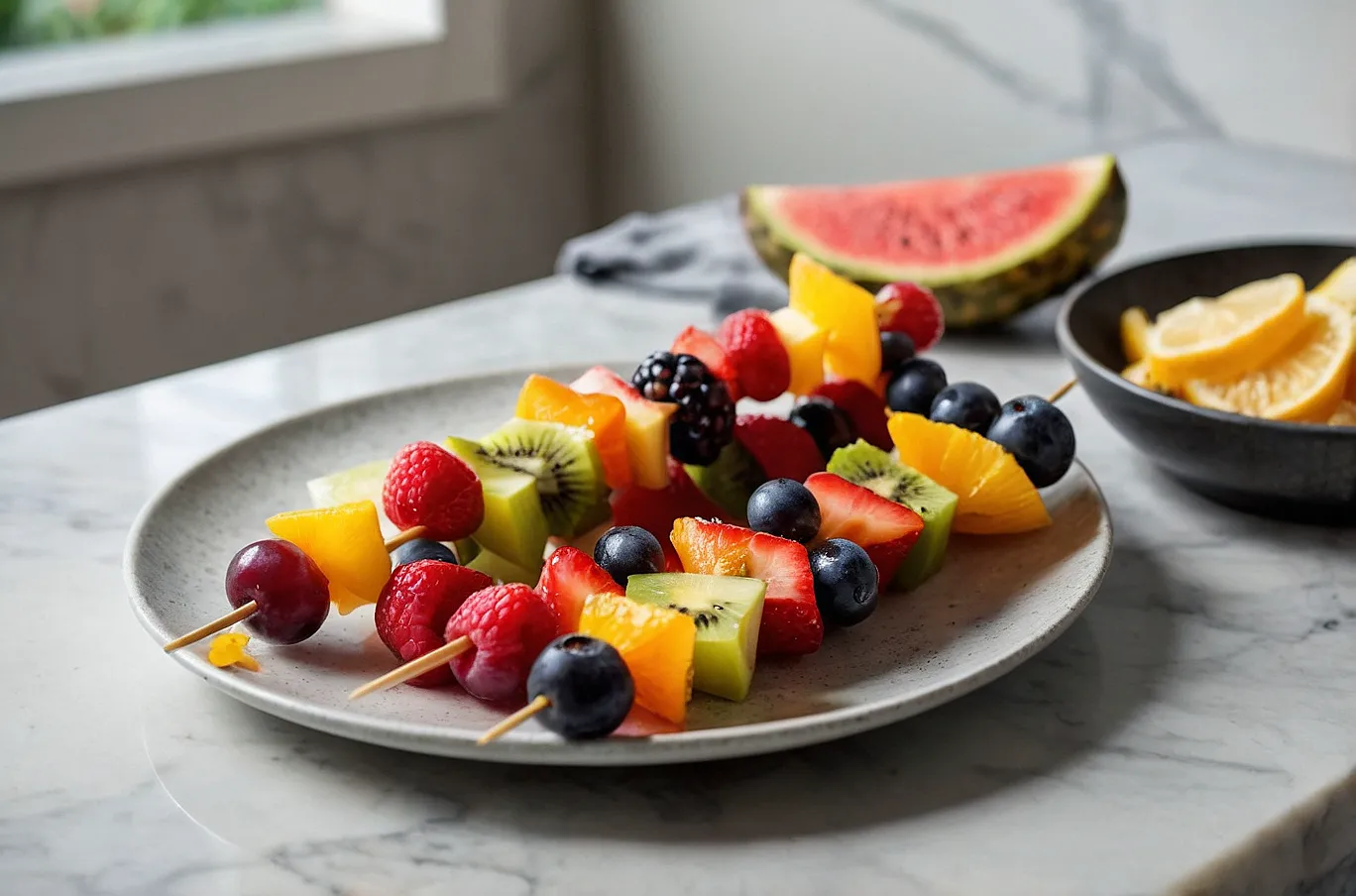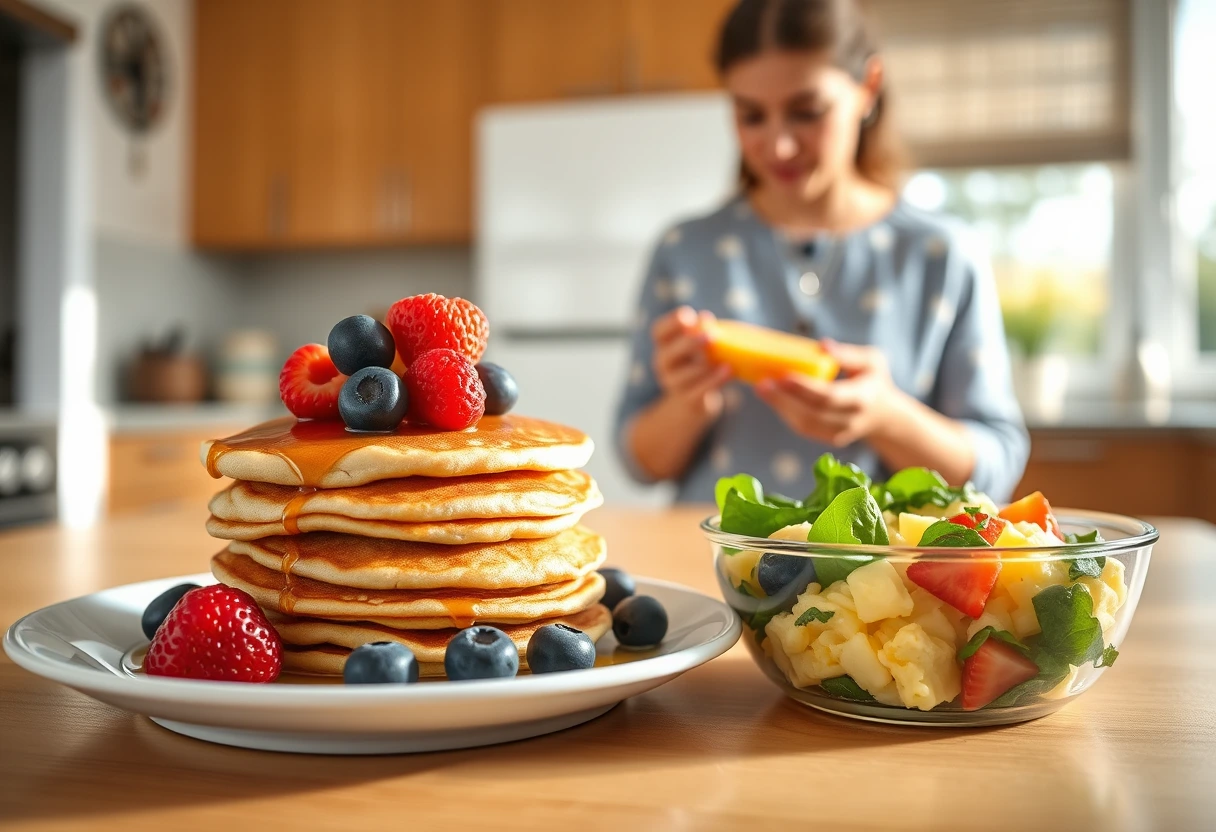 Other
OtherBusy Mom’s Easy Guide to Healthy Kid Meals
Being a busy mom often feels like a never-ending juggling act, especially when it comes to feeding your little ones. You want to ensure they get the best nutrition to fuel their growing bodies, but time is a luxury you rarely have. The good news is that providing wholesome, delicious meals doesn't have to be a daily struggle. This Busy Mom’s Easy Guide to Healthy Kid Meals is designed to equip you with practical strategies, clever hacks, and simple recipes that will transform mealtime from stressful to successful. We understand the unique challenges faced by modern mothers – from navigating picky eaters to managing tight schedules – and we’re here to help you conquer them with confidence. Get ready to embrace healthier eating habits for your family without sacrificing your precious time or sanity.
Understanding the Nutritional Needs of Growing Kids
Ensuring your children receive adequate nutrition is paramount for their development. A balanced diet for children provides the necessary energy, vitamins, and minerals they need to grow strong and healthy. It's not just about what they eat, but also the variety and consistency of their intake.
Macronutrients and Micronutrients: What Kids Really Need
Kids require a good balance of macronutrients (carbohydrates, proteins, and fats) for energy and growth, along with essential micronutrients (vitamins and minerals) for overall health. Carbohydrates from whole grains, fruits, and vegetables provide sustained energy. Proteins, found in lean meats, beans, and dairy, are vital for building and repairing tissues. Healthy fats, like those in avocados and nuts, are crucial for brain development. Don't forget calcium for strong bones and iron to prevent fatigue. Prioritizing wholesome ingredients is the first step towards a well-nourished child.
Common Dietary Challenges and How to Address Them
Many parents face hurdles like picky eaters or food sensitivities. Overcoming mealtime battles requires patience and creativity. Introduce new foods gradually, pair them with familiar favorites, and involve kids in meal preparation. For sensitivities, explore alternative sources for key nutrients to ensure a balanced diet for children.
Smart Grocery Shopping: Fueling Your Pantry for Success
The foundation of easy, healthy meals begins at the grocery store. Smart grocery shopping tips can significantly reduce your time in the kitchen and ensure you always have the right ingredients on hand for nutritious family meals.
Crafting Your Go-To Healthy Staples List
Before you even step into the store, create a list of your healthy pantry staples. Think about versatile ingredients that can be used in multiple quick and healthy recipes. This includes items like whole-grain pasta, brown rice, quinoa, canned beans, frozen fruits and vegetables, and lean protein sources. Having these on hand makes last-minute meal creation much easier and eliminates the temptation for unhealthy takeout. This is part of the efficient meal planning process.

Budget-Friendly Tips for Nutritious Purchases
Eating healthy doesn't have to break the bank. Look for seasonal produce, which is often more affordable and tastier. Buy in bulk when appropriate for non-perishable items like grains or canned goods. Utilize store sales and loyalty programs. Batch cooking for busy parents can also save money by reducing food waste and optimizing ingredient use. Consider buying larger cuts of meat and portioning them out yourself. These smart grocery shopping tips help you stretch your budget while still providing the best for your family.
Mastering Meal Prep for Time-Strapped Parents
Meal prep is a game-changer for busy mothers. It’s a time-saving meal prep strategy that allows you to cook in bulk once or twice a week, preparing components or entire meals that can be quickly assembled or reheated later. This proactive approach ensures you always have nutritious options readily available, even on your busiest days.
The Art of Batch Cooking and Component Prep
Batch cooking for busy parents involves cooking larger quantities of staple ingredients like grains (quinoa, brown rice), roasted vegetables, or grilled chicken. Component prep means chopping vegetables, making sauces, or portioning ingredients ahead of time. For example, on a Sunday afternoon, you could roast a large tray of mixed vegetables, cook a batch of chicken breasts, and prepare a big pot of lentil soup. These components can then be mixed and matched throughout the week for effortless weeknight dinners. This method is a core principle in any busy mom’s easy guide to healthy kid meals.
Efficient Storage and Reheating Techniques
Proper storage is crucial to keep your prepped meals fresh and safe. Invest in good quality airtight containers, preferably glass ones, for better food preservation. Label containers with the date and contents. When reheating, ensure food is heated thoroughly to the appropriate temperature. Many meals can be reheated in the microwave, oven, or on the stovetop. Some items, like salads or sandwiches, are best assembled fresh using prepped components. Smart storage extends the life of your wholesome ingredients, making your meal prep efforts truly pay off.
Kid-Friendly Recipes: Delicious & Nutritious Options
Finding quick and healthy recipes that kids will actually eat can be a challenge, but it’s far from impossible. The key is to make healthy food appealing and fun. This section offers ideas for nutritious family meals that cater to different tastes and meal times, ensuring a balanced diet for children.
Breakfast Boosts: Starting the Day Right
Breakfast sets the tone for the day, so make it count. Opt for options that are easy to prepare but packed with nutrients. Consider overnight oats with berries and chia seeds, whole-wheat pancakes made with added fruit purees, or scrambled eggs with hidden veggies. Smoothies are also excellent for fueling growing bodies, especially when you can sneak in spinach or kale alongside fruits and yogurt. These quick and healthy recipes ensure a strong start to the day.

Lunchbox Heroes: Creative & Appealing Ideas
Lunch can be a battleground, but with some creativity, you can pack lunches your kids will actually eat. Think beyond the basic sandwich. Mini whole-wheat pitas filled with hummus and shredded carrots, pasta salad with cherry tomatoes and cucumber, or homemade chicken nuggets (baked, not fried) are great options. Include a variety of textures and colors to make it visually appealing. Don't forget kid-friendly snacks like fruit slices, cheese sticks, or a small handful of nuts. Creative food presentation, like using cookie cutters for sandwiches, can also make a big difference.
Effortless Weeknight Dinners: Solutions for Busy Evenings
Weeknights are hectic, which is why effortless weeknight dinners are a lifesaver. Sheet pan meals, where you roast protein and vegetables together on one pan, are incredibly convenient. One-pot pasta dishes are another favorite. Slow cooker meals, like chili or shredded chicken, allow you to "set it and forget it" earlier in the day. These quick and healthy recipes minimize cleanup and maximize family time. Family meal planning around these types of dishes can simplify your evenings significantly.
Making Healthy Eating Fun and Engaging for Kids
One of the biggest challenges for parents is getting kids to actually eat healthy food. It's about more than just nutrition; it's about making mealtime a positive and enjoyable experience. This requires a bit of creativity and patience to foster good eating habits and address picky eaters solutions effectively.
Involving Kids in the Kitchen: From Shopping to Cooking
Kids are more likely to eat what they help prepare. Involving them in the entire process, from choosing fruits and vegetables at the grocery store (applying smart grocery shopping tips) to washing produce, stirring ingredients, or setting the table, empowers them. Even young children can help tear lettuce or rinse berries. This hands-on experience not only teaches them valuable life skills but also increases their willingness to try new foods. It's a fantastic way to introduce them to the concept of wholesome ingredients and how nutritious family meals come together.
Creative Food Presentation and Playful Plating
The visual appeal of food can significantly influence a child's desire to eat it. Creative food presentation doesn't mean you need to be an artist, but a few simple tricks can make a big difference. Arrange vegetables into a "smiley face" on their plate, use cookie cutters for sandwiches or fruits, or serve colorful dips. Presenting food in a fun and playful way can turn a "no thanks" into an "I'll try it!" For picky eaters solutions, sometimes just a change in how the food looks is all it takes. This can help overcome mealtime battles and encourage a more balanced diet for children.
Addressing Picky Eaters and Food Refusal
Picky eaters are a common reality for many parents. It can be frustrating when your child refuses nutritious family meals you've carefully prepared. However, with patience and the right strategies, you can navigate these challenges and encourage healthier eating habits without constant mealtime battles.
Strategies for Introducing New Foods Gently
Introducing new foods should be a gradual and low-pressure process. Don't force your child to eat something they refuse. Offer small portions of new foods alongside familiar favorites. It can take multiple exposures (sometimes 10-15 times!) before a child accepts a new food. Try different preparation methods for the same food – roasted carrots might be rejected, but raw carrot sticks with hummus could be a hit. Remember, consistency is key when striving for a balanced diet for children.

When to Seek Professional Help for Feeding Challenges
While most picky eating is a normal phase, sometimes it can indicate deeper issues. If your child's food refusal is severe, impacting their growth or leading to nutritional deficiencies, or if they exhibit extreme anxiety around food, it might be time to consult a pediatrician or a pediatric dietitian. These professionals can offer tailored picky eaters solutions and support to ensure your child is fueling growing bodies adequately and safely. Don't hesitate to seek help if you're concerned about your child's eating patterns or a balanced diet for children.
Beyond Meals: Healthy Snacking and Hydration Habits
While main meals are important, healthy snacking and proper hydration play a significant role in a child's overall well-being and energy levels throughout the day. These are often overlooked but crucial components of a busy mom’s easy guide to healthy kid meals.
Smart Snacking: Fueling Between Meals
Kid-friendly snacks should be mini-meals, offering nutrients rather than just empty calories. Avoid highly processed snacks. Instead, opt for options like apple slices with peanut butter, yogurt with berries, cheese and whole-grain crackers, or vegetable sticks with hummus. Prepare snack portions ahead of time (another great time-saving meal prep strategy) to make healthy choices easy when hunger strikes. These thoughtful choices support fueling growing bodies and maintain energy levels between nutritious family meals.
Encouraging Proper Hydration Throughout the Day
Water is essential for every bodily function. Encourage your children to drink water consistently throughout the day. Keep a water bottle handy for them, offer water with every meal, and limit sugary drinks like soda and fruit juice (even 100% juice should be consumed in moderation). Make water fun by adding slices of fruit like cucumber, lemon, or berries for a natural flavor boost. Establishing good hydration habits for kids early on is vital for their long-term health and concentration. It’s a simple yet powerful aspect of a comprehensive family meal planning approach.
Maintaining Consistency and Enjoying the Process
Creating healthy eating habits for your family is a journey, not a destination. Consistency is key, but so is maintaining a positive attitude and enjoying the process. Remember, every little effort contributes to a healthier lifestyle for your children.
Overcoming Mealtime Battles with Patience and Positivity
Mealtime battles can be exhausting, but approaching them with patience and positivity can make a huge difference. Avoid power struggles. Offer choices within healthy parameters (e.g., "Would you like broccoli or green beans?"), and try to keep mealtimes calm and pleasant. Celebrate small victories, like trying a new food, and remember that some days will be better than others. Your attitude sets the tone for the entire family meal planning experience.
Long-Term Benefits of a Healthy Eating Foundation
The effort you put into establishing a balanced diet for children now will yield significant long-term benefits. Healthy eating habits contribute to better physical health, improved cognitive function, and stronger immune systems. It also teaches children about making nutritious choices for themselves as they grow older. Fueling growing bodies with wholesome ingredients sets them up for a lifetime of well-being. This busy mom’s easy guide to healthy kid meals is an investment in their future.
Providing healthy meals for your kids doesn't have to be overwhelming. By implementing smart strategies like meal prepping, focusing on wholesome ingredients, and making mealtime engaging, you can ensure your children receive the nutrition they need to thrive. Embrace these tips, adjust them to fit your family’s unique needs, and enjoy the journey of fostering a lifetime of healthy eating habits for your little ones. Remember, you’re doing a great job!
